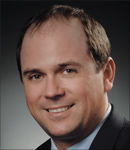Over the last 30 years, we have seen a historic rise in the demand for energy. In fact, since 1982, our nation’s increased demand for electricity has outpaced the grid’s transmission capacity by 25 percent annually. Understandably, this growing gap between electricity demand and capacity has placed a greater emphasis than ever before on tools that can help reduce peak demand.
One such tool is demand response. By managing peak demand, demand response has helped utilities and grid operators maintain grid reliability and stabilize electricity prices while also delivering a range of environmental benefits. In recognition of the important role it plays, FERC Order 745 mandated that demand response be compensated at the same rate as generation in organized energy markets.
Prior to FERC Order 745, the energy savings, or ‘negawatts,’ generated by demand response programs commanded less compensation than the megawatts created by energy producers. Now, when a net benefits test proves demand response is cost effective, demand response negawatts must also earn the locational marginal price (LMP) normally paid for megawatts.
The decision was a very important milestone for the demand response industry and demonstrates the critical role that demand side management programs play in our nation’s energy mix. There are a lot of reasons why demand response has been so successful during the last 30 years, but three key areas help separate it from other forms of energy management.
Flexible Communication Models
Demand response systems offer a range of communication models to meet the varying needs of utilities and energy consumers.
One-way communication systems make up a large part of the demand response industry and play a critical role in managing the nation’s power. They effectively shed excess loads during the summer cooling season and contribute needed kilowatts at other peak times.
For utilities with broader consumer engagement programs, demand response programs also offer advanced communication systems that engage customers in their energy consumption decisions. They enable demand response to offer solutions to more than just problems of load reduction. With these communication systems, demand response can deliver more advanced direct load control programs as well as dynamic pricing programs that deliver significant peak load reduction. Additionally, utilities can integrate these programs with conservation and energy efficiency programs that target base load reduction – an ever-increasing industry trend.
Personalized Programs
Another key factor behind the success of demand response programs is that they can be personalized to meet specific customer needs. This is necessary as different types of customers consume energy quite differently. For example, for residential customers in hot climates, HVAC draws the highest load. For industry, process loads predominate. As it turns out, an automated program structure works well for HVAC as load can be cycled so that the customer doesn’t feel any or much impact, but process loads prove more complex and difficult to control remotely. Clearly, a one-size-fits-all approach is unlikely to deliver the highest levels of predictability and reliability, and instead utilities need to offer customized demand response programs.
The nature of customers’ businesses or lifestyles will determine the demand response structure that will work best. A steel mill, for instance, will require a demand response system it can implement and manage without externally controlled operational interruptions. Energy use reductions must happen behind the scenes in ways that keep critical production elements in motion. On the other hand, a hospital will have different considerations, such as its emergency power generation capacity. A hospital will want to look at how it can leverage this emergency energy supply to benefit from participation in demand response programs. At times it may make sense cost-wise to use a back-up generator to replace some of the load carried by main power sources. Residential customers will look at ease-of-use and impact on comfort: will taking part in a demand response initiative burden their daily lives? The more simple and automated the demand response system, the more likely participation will seem enticing and prove worthwhile. Additionally, programs that use cycling technologies versus temperature offset provide benefits to both the consumer and the utility. From a utility perspective, cycling provides predictable demand reduction over multiple hours of control. For customers, the periodic cycling of the HVAC system improves comfort by moderating the rate of temperature rise and reducing humidity.
Utilities that understand the importance of customizing demand response and other energy management programs to meet different customer needs are seeing very impressive results. A perfect example is Pepco Holdings, Inc. (PHI), which is running one of the largest demand response programs in the nation. Its demand response efforts are part of a broader ‘Energy Savings’ program that offers a range of options to engage residential and business customers. Since it was introduced, the Energy Savings Program has reduced electricity consumption by more than 420,000 Mwh.
Another lesson we’ve learned from marketing demand response programs to millions of residential customers is that it is difficult to predict exactly what consumers want. For example, in some programs, Comverge offers consumers a choice between a smart thermostat and a switch. Conventional wisdom says that customers would unanimously choose a modern, communicating, Web programmable thermostat over a switch that sits outside their house. But in reality, in programs that offer these two options, 65 percent choose the switch for reasons such as:
- They like their current thermostat
- They want to participate more passively in the program
- They simply don’t want an installer in their house
The point is that by offering choice, demand response programs tend to have a high level of participation.
Depending on customer needs, successful demand response programs may incorporate a suite of different solutions. For example, PHI’s program allows customers to choose between Web-programmable thermostats or outdoor switches as well as a variety of different cycling options. Program structure can also vary significantly based on the sophistication of the pricing options available to customers.
Compelling Compensation
Finally, and perhaps most importantly, demand response programs offer compensation structures that engage both residential consumers and commercial and industrial users.
Compensation structure can range from a set amount of money for a set number of hours of commitment to lowering energy use to dynamic rate structures and pricing schemes that give customers flexibility in how they choose to curb their energy consumption. This flexibility can lead to more customer participation and satisfaction because customers can determine which actions best suits their lifestyles and energy needs.
The early leaders in dynamic pricing automation – Gulf Power and Tampa Electric Company (TECO) – have demonstrated the profound impact such dynamic pricing schemes can have on demand response programs.
- Gulf Power has seen an 89 percent customer satisfaction rate with its TOU-CPP initiative, and nearly 87 percent of the time participants pay less for electricity. By adjusting price points between low, medium, high and critical
- TECO also delivers lower prices 87 percent of the time. It has reliably shed kilowatts during winter and summer peak every year since 2008 with its dynamic pricing program in place
Dynamic pricing also amplifies the importance of customer engagement in demand response programs. Because the infrastructure in effect gives customers the opportunity to save money, dynamic pricing changes the framework of demand response programs by incentivizing customers to increase their engagement with utilities. In so doing, it places an increased importance on the value and frequency of customer interactions.
A Reliable and Predictable Future
As the role of demand response continues to increase, system optimization will take center stage. Initiatives like dynamic pricing and other enhancements in customer engagement help tailor demand response to specific customers, ensuring it delivers the best possible performance across a broad spectrum of energy requirements. Automation that simplifies customer participation through set-and-forget capabilities will encourage more customer involvement. The more participants, the larger the positive influence demand response can have on the nation’s energy distribution.
Demand response has proved invaluable throughout its 30 year lifespan and will continue to play a crucial role in moving the country to the smart grid. In addition to the integration of renewables, other clean energy initiatives actually threaten to strain the electric grid.
A valuable stabilizing force since its inception, demand response has the ability to be even more in the years ahead. It can – and will – in fact be revolutionary, endowing customers with more control than they have ever had before over their energy consumption and its price tag. In short, demand response will continue to enable utilities to meet the country’s changing and growing energy needs, making the smart grid viable, and helping to keep the energy future secure.
About the Author
 Jason Cigarran is the vice president, corporate marketing and communications for Comverge. Prior to joining Comverge, Jason was the vice president, investor relations for Eclipsys Corporation, a healthcare information technology company. Prior to joining Eclipsys, he ran marketing programs for PCi Corporation, a division of Wolters Kluwer Financial Services. Mr. Cigarran has more than 19 years’ marketing and communications experience in the information technology (IT) industry.
Jason Cigarran is the vice president, corporate marketing and communications for Comverge. Prior to joining Comverge, Jason was the vice president, investor relations for Eclipsys Corporation, a healthcare information technology company. Prior to joining Eclipsys, he ran marketing programs for PCi Corporation, a division of Wolters Kluwer Financial Services. Mr. Cigarran has more than 19 years’ marketing and communications experience in the information technology (IT) industry.







